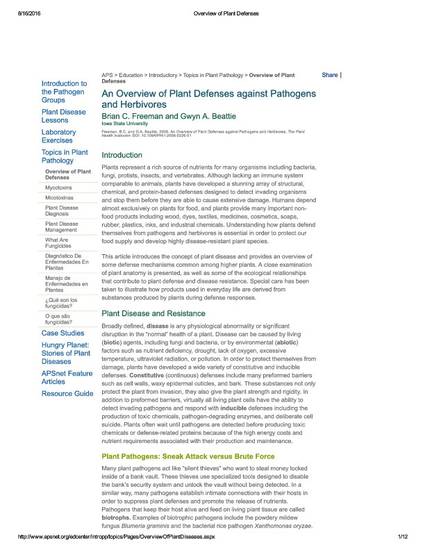
Plants represent a rich source of nutrients for many organisms including bacteria, fungi, protists, insects, and vertebrates. Although lacking an immune system comparable to animals, plants have developed a stunning array of structural, chemical, and protein-based defenses designed to detect invading organisms and stop them before they are able to cause extensive damage. Humans depend almost exclusively on plants for food, and plants provide many important non-food products including wood, dyes, textiles, medicines, cosmetics, soaps, rubber, plastics, inks, and industrial chemicals. Understanding how plants defend themselves from pathogens and herbivores is essential in order to protect our food supply and develop highly disease-resistant plant species.
This article introduces the concept of plant disease and provides an overview of some defense mechanisms common among higher plants. A close examination of plant anatomy is presented, as well as some of the ecological relationships that contribute to plant defense and disease resistance. Special care has been taken to illustrate how products used in everyday life are derived from substances produced by plants during defense responses.
Available at: http://works.bepress.com/gwyn-beattie/7/

This article is from The Plant Health Instructor (2008), doi:10.1094/PHI-I-2008-0226-01 . Posted with permission.